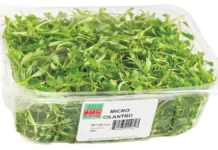
The hospitality industry has been devastated by the COVID-19 pandemic, perhaps more so than any other sector. With restaurants struggling to stay open for business and many closing their doors for good, at nearly 40% of all job losses, hospitality unemployment is at four times greater than the national average1 and more layoffs are expected. While these difficult realities remain, we must look to 2021 with the hope of a light at the end of the tunnel, putting an emphasis on holistic risk management strategies to offset costs and help prevent further losses.
As outlined in HUB International’s recently released “2021 Hospitality Industry Outlook”, the following are top issues we see shaping the hospitality industry, and their implications for risk and insurance:
1. Increasing Insurance Rates & Proactive Risk Management
Reduced or vacant properties combined with operators’ financial stress will push property insurance, along with commercial umbrella rates, up by 25% to 50% into 2021, and the amount each insurer is willing to write for a particular line is increasingly limited. The industry’s financial straits also pose executive liability issues with coverage being driven up an average of 25% in response. Directors’ and Officers’ (D&O) and Errors and Omissions (E&O) exposures are ramping up with the prospect of more bankruptcies and business consolidations and creditor suits in response. The significant number of layoffs also may trigger Employment Practices Liability actions by employees, and by regulators if payroll tax payments have lapsed.
The best way to control insurance costs is to be proactive to plan ahead to avoid potential losses as much as possible in the first place. It is more important than ever to work with your insurance broker on risk assessments for your business to ensure any potentially costly issues are identified and corrected, like legionella in the water supply or pipes that could freeze due to lack of maintenance staff for necessary protocols. Your broker should proactively review the adequacy of your executive liability coverage for changing circumstances, as well as on practices that improve the risk exposures of executives and boards going forward. The best defense is adequate disclosures, having followed regulations or government recommendations, and following an emergency plan that is regularly reviewed and updated.
2. As restaurants pivot, adequate protection against risk is a key concern.
From the very beginning of the pandemic, restaurants had to quickly develop and provide options to survive the circumstances. That was demonstrated in the immediate wake of the pandemic quarantine period. Restaurants pivoted to delivery and take-out, and kept up the services to stay open. Others have reinvented their business models. The trend toward “ghost” kitchens was hot before the pandemic and has accelerated. These can be urban warehouses containing multiple small kitchens leased by a restaurant or a restaurant’s subcontractor for delivery only.
Chances are that delivery services were easily accommodated by third party services like Grub Hub and Uber Eats, which delivered $10.2 billion in carryout meals in 2018. Those that have proceeded with their own drivers should work with their brokers to offset such risks as food safety, customer privacy and data security. They should also be aware of increases in auto coverage in 2021 that might make third party delivery services more attractive.
Another potential risk that restaurant operators face in 2021 is a surge in outsized claims being tracked back to on-the-job contagion, pushing financially stretched health insurers to subrogate them back to workers’ compensation (WC) carriers. That could trigger double digit rate increases in WC. Restaurants that have opened to dine-in at any capacity (if and when they had the state’s approval to do so) should also conduct risk assessments to audit their coronavirus safety measures, to ensure they meet or exceed Center for Disease Control (CDC) guidelines. Restaurants should also contact their insurance broker for this type of service and additional resources.
Too many restaurants, however, have not been able to withstand the financial pressures of the pandemic. Chain restaurants alone have closed more than 1,500 locations since it started, including such companies as Chuck E. Cheese and California Pizza Kitchen. Those in such straits should check with their brokers on the best way to manage relevant executive liability issues.
3. Transfer risk where you can.
When a business – and industry – is in crisis mode, moving from reactive to proactive mode may be a challenge, but 2021 may be the time to do it. Risk transfer strategies are available. Some are easier than others to put in place.
Strategies like the captive insurance option might be worth considering when the industry is under less financial pressure. Captives allow companies to self-finance their risks, with stop loss coverage assuming the cost of outsized claims. Especially for those with better claims records, the captive strategy can present cost savings and tax advantages over traditional insurance. The captive strategy requires a broker who has experience setting up captives and can provide perspective on the different types and their advantages and disadvantages.
Succeeding through 2021’s challenges
The industry that emerges in 2021 and beyond from the disruption of the pandemic will be not just slimmer, but smarter, demonstrating the resiliency it takes to get through to the other side of uncertain times. It will be a time when meeting health and safety concerns will be paramount – for employees as well as for customers and guests. At the same time, the trend toward buying experiences will accelerate post-pandemic and help reinvigorate travel again. The industry’s challenge will be to innovate around it all. An environment like this creates opportunities, but also risks.
Work with an experienced insurance broker and their risk management experts to learn how to develop a risk management program and business continuity plan that will help protect your business and prepares you for the market ahead. A good broker will help position your business’ story with insurance carriers, so you get the right coverage and more control over rising premiums.
For the latest information, guidance and resources on COVID-19 to help you protect what matters most, please visit www.hubinternational.com/coronavirus.
1. https://www.ustravel.org/sites/default/files/media_root/Employment%20Report.pdf























